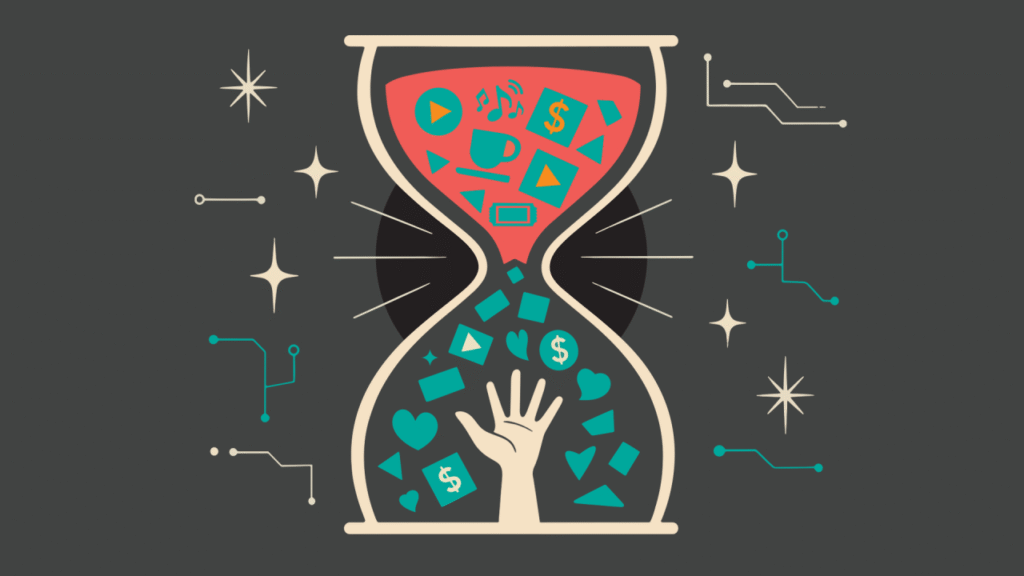Want to design truly helpful experiences? Use digital expectation research to eliminate friction

Speed still matters, but it no longer wins the day on its own. Today’s benchmark is helpfulness—the feeling that an experience understands what you’re trying to do and clears a straight path to getting it done. Our way of finding that path is something we call digital‑expectation research: a ruthlessly focused look at how real people glide through the digital apps and experiences they love and where a financial journey breaks down by comparison.
Why “faster” isn’t always better
In our Finsights research, 46 % of mobile‑banking users said they’ve hit at least one confusion point while trying to complete a task. Those failures rarely come from slow load times. They come from unclear language, surprise steps, or doubt that the action will really work.
That’s why we introduce the concept of time to value (TTV) when we evaluate an experience. Netflix can take a first‑time visitor from “I want a movie” to streaming in ~15 seconds. Amazon lets you reorder coffee in a single tap. Those brands have collapsed TTV—and customers now expect the same from everything on their phones, including financial tasks.
If opening a checking account takes 20 minutes of identity checks and test‑deposits, people notice the gap. They don’t always finish it.
And it’s not just sign‑up flows. Balance transfers, bill‑pay set‑ups, even a simple address change can balloon into multi‑screen marathons. Each unnecessary field chips away at momentum—and at trust. Baymard Institute’s large‑scale checkout testing found that 18 % of users abandon a purchase when the form feels “too long or complicated.” One or two extra prompts can instantly slice conversion by double digits. (baymard.com)
How we surface hidden friction
We don’t march Clients through a rigid checklist. Instead, we recreate the journey exactly as a first‑time user would and pressure‑test each step against real‑world touchstones—does it feel as effortless and immediate as streaming on Netflix, reordering on Amazon, hailing a ride on Uber, or any of the dozens of everyday tasks customers complete in seconds? Here’s what that looks like in practice:
- Real‑world comparisons – We open your flow alongside a handful of everyday digital experiences customers already trust and note where your journey lingers longer than an on‑demand movie or a one‑tap reorder.
- Friction mapping – We flag every extra click, surprise step, or confusing phrase so teams can clearly see where confidence wobbles.
- Impact framing – For each delay we write a plain‑language note that links the slowdown to possible drop‑off, giving teams clear context—not blame.
- Collaborative next steps – We share the findings back to your team along with potential solutions that can remove the friction points. No top‑down mandates—just the raw insight to inform your roadmap.
No silver‑bullet templates, no scorecards—just pragmatic comparisons that widen the lens beyond banking.
What Clients gain
- Sharper prioritization – Teams rally around the handful of changes that shorten TTV and build trust, instead of debating pet features in the abstract.
- Instant customer empathy – Stakeholders experience what their customers do first hand, and hear about the stumbling blocks in real time (e.g., “Notice how Amazon skips this step entirely”).
- Momentum over meandering – A ranked, realistic backlog turns “improve the journey” into concrete actions design, engineering, and compliance can all execute against.
When helpfulness becomes the metric—measured by TTV and clarity, not just page speed—prospects don’t just finish the flow. They feel confident putting your product front and center in their financial routine.
Digital‑expectation research keeps us—and our Clients—ruthlessly focused on solving human problems, not just polishing screens. Ready to see where hidden friction is costing you real growth?
What matters to you?
Want to get work that really matters for you and your business? Let’s talk.
Email Us